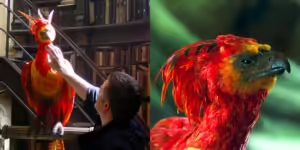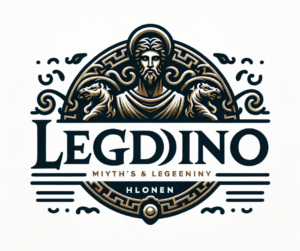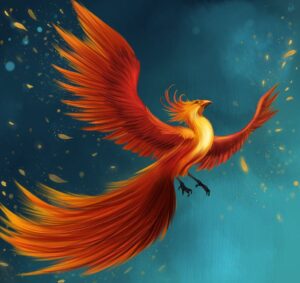The Phoenix, a mythical bird known for its cycle of death and rebirth, has captivated human imagination for centuries. From ancient Egyptian and Greek mythologies to modern pop culture, the legend of the Phoenix continues to inspire awe and wonder. In this article, we explore the origins of the Phoenix, its symbolism, and its enduring presence in contemporary society.
Origins of the Phoenix Myth
The legend of the Phoenix originates from ancient civilizations. The Egyptians called it Bennu, associating it with the sun god Ra and the concept of resurrection. The Greek historian Herodotus described the Phoenix as a bird with a lifespan of 500 years, which builds a nest of aromatic woods and sets it on fire to be reborn from its ashes.
Ancient Egyptian Mythology
In Egyptian mythology, the Bennu bird symbolized the sun, creation, and renewal. It was often depicted as a heron and considered an aspect of the god Ra. The Bennu bird’s death and rebirth cycle mirrored the setting and rising of the sun, representing the eternal nature of life.
Greek and Roman Adaptations
The Greeks adopted the Phoenix myth, blending it with their own cultural elements. The Phoenix was described as a magnificent bird with vibrant plumage and a melodious song. It was believed to live in Arabia, where it would immolate itself and be reborn every 500 years. The Romans later integrated this myth, adding their interpretations and spreading the legend throughout the empire.
Symbolism of the Phoenix
The Phoenix is a powerful symbol of renewal, transformation, and immortality. Its ability to rise from its ashes represents resilience and the capacity to overcome adversity. This symbolism resonates in various aspects of modern life, including literature, art, and psychology.
Literary Symbolism
In literature, the Phoenix often symbolizes rebirth and new beginnings. It appears in works such as J.K. Rowling’s “Harry Potter” series, where the Phoenix Fawkes aids the protagonists in moments of crisis, embodying hope and renewal. Similarly, in T.S. Eliot’s poem “The Waste Land,” the Phoenix represents spiritual resurrection and the possibility of redemption.
Artistic Representations
Artists have long been fascinated by the Phoenix, depicting it in paintings, sculptures, and other forms of visual art. The bird’s vibrant colors and majestic appearance make it a compelling subject, while its symbolism adds depth to artistic expressions. Contemporary artists continue to explore the Phoenix motif, finding new ways to interpret its myth.
Psychological Significance
Psychologists use the Phoenix as a metaphor for personal growth and recovery from trauma. The concept of rising from one’s own ashes encourages individuals to embrace change and view challenges as opportunities for transformation. This positive outlook is integral to therapies that focus on resilience and self-improvement.
The Phoenix in Modern Culture
The Phoenix’s mythological roots extend into modern culture, influencing various domains such as entertainment, fashion, and even science. Its timeless appeal continues to captivate audiences and inspire innovation.
Pop Culture Phenomenon
In popular culture, the Phoenix appears in films, television shows, and video games. Characters like Jean Grey from Marvel’s X-Men series embody the Phoenix’s transformative powers, showcasing its relevance in contemporary storytelling. The bird’s image is also used in branding, symbolizing strength, renewal, and excellence.
Fashion and Design
Fashion designers often draw inspiration from the Phoenix’s striking appearance. The bird’s vibrant feathers and regal bearing influence clothing designs, accessories, and even makeup trends. The Phoenix motif is synonymous with elegance and transformation, making it a popular choice in high fashion.
Scientific Exploration
In science, the concept of the Phoenix inspires research in fields like biology and environmental science. Scientists study organisms that exhibit regenerative abilities, drawing parallels to the Phoenix’s rebirth. This research has potential applications in medicine, particularly in regenerative medicine and tissue engineering.
The Phoenix as a Metaphor for Modern Challenges

The Phoenix’s symbolism is particularly relevant in today’s world, where individuals and societies face numerous challenges. Its message of resilience and renewal offers hope and motivation to overcome difficulties and embrace change.
Overcoming Personal Adversity
In personal development, the Phoenix metaphor encourages individuals to view setbacks as opportunities for growth. By adopting a Phoenix-like mindset, people can develop resilience and the ability to adapt to life’s inevitable challenges. This perspective is essential for mental health and well-being.
Societal Transformation
On a broader scale, the Phoenix symbolizes societal transformation and the potential for renewal. In times of crisis, such as economic downturns or environmental disasters, the Phoenix’s message of rebirth can inspire collective efforts to rebuild and improve. It serves as a reminder that from destruction, new opportunities can arise.
Conclusion
The legend of the Phoenix endures through its powerful symbolism and its ability to inspire across various domains. From its ancient origins to its modern interpretations, the Phoenix continues to captivate our imagination and offer hope in times of adversity. Embracing the Phoenix’s message of resilience and renewal can lead to personal and societal transformations, making this mythical bird as relevant today as it was millennia ago.



















